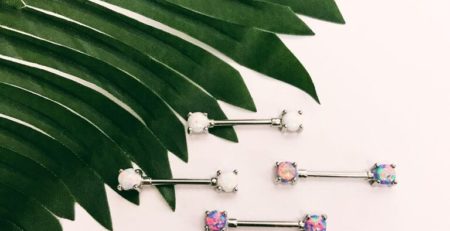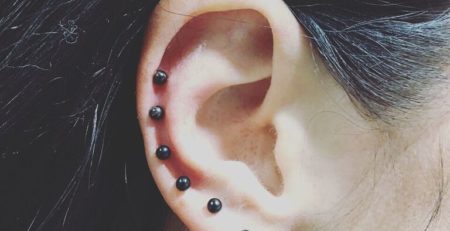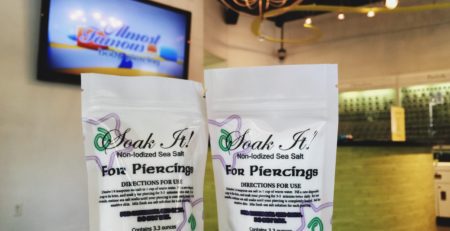Common Piercing Myths Debunked
Body piercing has surged in popularity, but with its rise, so have the myths and misconceptions surrounding it. Whether you’re considering your first piercing or are a seasoned enthusiast, it’s crucial to separate fact from fiction. Here, we debunk some of the most common piercing myths to help you make informed decisions and ensure a smooth piercing experience.
Myth 1: Piercings Are Extremely Painful
Fact: Pain tolerance varies from person to person, and while a piercing can be uncomfortable, it’s generally not unbearable. The sensation of piercing can be compared to a quick pinch or a sharp scratch. Many people find the pain manageable and brief, with the most discomfort lasting only a few seconds.
Myth 2: You Can Get Infections Just by Getting a Piercing
Fact: While infections are possible, they are not inevitable. Proper aftercare and hygiene significantly reduce the risk. Choosing a reputable piercing studio with strict sanitation practices also plays a crucial role in preventing infections. Always follow your piercer’s aftercare instructions and avoid touching or twisting your piercing with unwashed hands.
Myth 3: You Have to Avoid Swimming After Getting a Piercing
Fact: While it’s true that you should avoid swimming in pools, hot tubs, and natural bodies of water until your piercing is fully healed, this is more about minimizing exposure to potentially harmful bacteria. Once healed, most piercings don’t pose a risk for swimming. While it is healing, we recommend keeping the piercing out of chlorinated water or lakes for just 6-8 weeks. We carry ‘Cover-It!’ kits which are water-proof bandages that can be worn over most piercings though they work better on piercings done on flatter areas of the body such as navel, dermals, etc.
Myth 4: You Can’t Get Pierced if You Have Sensitive Skin
Fact: People with sensitive skin can still get piercings, but they should be mindful of the materials used. Opting for hypoallergenic jewelry made of high-quality metals like titanium can help minimize irritation. Your piercer will provide recommendations based on your skin sensitivity.
Myth 5: Piercings Will Leave Permanent Scars
Fact: Scarring is not guaranteed with every piercing. The likelihood of scarring depends on several factors, including the piercing’s location, how well you follow aftercare instructions, and your body’s healing response. Most piercings heal with minimal scarring, and any marks that do remain are usually small and fade over time.
Myth 6: You Need to Use Antibiotic Ointments for Piercing Aftercare
Fact: Overusing antibiotic ointments can actually irritate your piercing and impede the healing process. Sometimes simple is the way to go so we recommend sea salt and glycerin soap. These options are gentle and help clean the area without disrupting the natural healing process.
Myth 7: You Should Remove Your Jewelry if It Gets Infected
Fact: Removing your jewelry during an infection can cause the piercing to close up, trapping the infection and any drainage inside. Instead, clean the area as directed and consult your piercer or a healthcare professional for advice. Keeping the jewelry in place ensures that the infection can drain properly.
Myth 8: Piercings Are Just a Fad and Won’t Last
Fact: Body piercing has been practiced across various cultures for thousands of years, indicating its enduring nature. While trends in styles and placements may shift, the practice itself is far from a passing fad. Many people maintain their piercings as a form of self-expression or cultural tradition for years.
Myth 9: You Can’t Have Multiple Piercings
Fact: There is no limit to how many piercings you can have, as long as you follow proper care guidelines and give each piercing adequate time to heal. Multiple piercings can be a form of personal style, and many people enjoy the flexibility of combining different types and placements.
Myth 10: Piercings Will Always Look Bad if You Decide to Remove Them
Fact: While some piercings may leave small marks, many heal well and leave little to no trace once the jewelry is removed. The visibility of any residual marks often depends on the individual’s healing process and the location of the piercing.
Final Thoughts
Navigating the world of body piercings can be challenging, especially with the abundance of myths and misinformation out there. By understanding the facts, you can approach your piercing experience with confidence and knowledge. Always consult with professional piercers and follow their advice to ensure a safe and satisfying piercing journey.
If you have any questions or concerns about body piercing, don’t hesitate to reach out to us by phone, message, or email. Happy piercing!














Leave a Reply